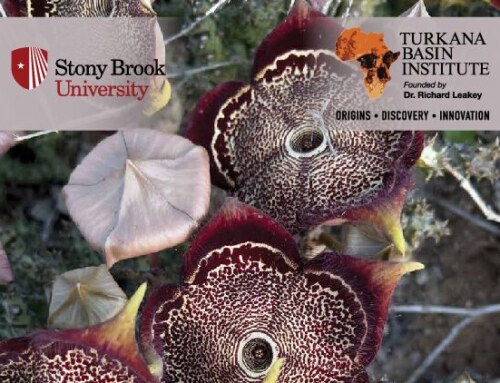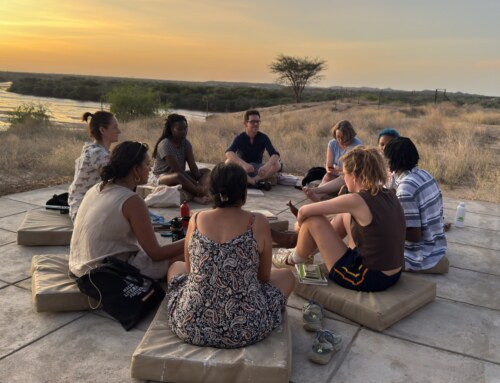Greetings from the hot and sunny Turkwel, Turkana!
It’s Mishy and Alisa reporting on our first week of the Geology module with Professor Patrick Gathogo.
Let’s go through some highlights and key points:
On the first Monday, February 5, we were briefed on safety measures (S, H, E) for keeping safe, hydrated and healthy, and knowledgeable about the environment we are in. We were told to watch out for areas where snakes and predators may be, such as in caves and under rocks, and to stay hydrated and “hibernate” during the hottest parts of the day. We sure have been hydrating with delicious iced tea and hibernating with post-lunch naps! Professor Gathogo also took us through the concepts of geology and keynotes to record in the field to make sure the data can be interpreted even if patterns are unclear at the moment. He took us through the many purposes and benefits of being a geologist as defined by Frank Brown, such as determining numerical ages, orders of events, deposition environments, materials sources, and understanding paleoanthropological events and evolution. Later that day, we had our first field excursion for geology. We took a walk around the outcrops outside TBI, applying our new knowledge of S, H, E, and rocks to the environment.
On Tuesday, February 6, we learned about spatial concepts and mapping and then were grouped in pairs to complete an exercise around the TBI campus. We each produced maps of the campus using Jacob’s staff and a compass. Some students used the polar coordinate system, while others used the cartesian coordinate system. In the evening, some students went down to the river to cool off and some played volleyball outside the compound.
On Wednesday, February 7, we had an introduction to rocks and minerals as well as sedimentary processes. Did you know that “stone tools” can actually be considered “rock tools”? Rocks are naturally formed solids composed of minerals and stones are man-made construction materials. “Stone tools” are rocks cut and shaped by humans, but haven’t undergone changes beyond rock composition so they’re still rocks! We also learned the distinctions between sediments and soils, and minerals and mineraloids. Sediment transport and deposition methods were also covered. In the lab, we observed and classified minerals based on their properties with optical, textural, and mechanical examinations.
Thursday, February 8 was stratigraphy day! We learned about the disciplines within stratigraphy (biostratigraphy, lithostratigraphy, chronostratigraphy, tephra stratigraphy, and magnetic polarity stratigraphy), Steno’s principles of superposition, horizontality, and lateral continuity, and the geologic time scale. For our practical exercise, in pairs, we took a transect of the Turkwel River.
We had group presentations on Friday, February 9 on memorizing members and formations of the Omo Group. We had vibrant song covers, mnemonics, storytellers, and fun slide presentations connecting members to planets or foods to help us memorize the names of members from oldest to youngest. Then, in our practical, we observed the outcrop using a Brunton compass, Jacob’s staff, and our knowledge of geological principles by Steno.
Saturday, February 10, just in time for Valentine’s Day, we learned about dating techniques… for rocks of course! Under relative dating (determining the general sequences) we have physical stratigraphic dating, paleontologic dating, paleomagnetic, and tephrostratigraphy. There are also seasonal, chemical, and isotopic methods. Physical stratigraphic dating adds to our previous Steno’s principles, saying that particles within a rock bed are older than the bed itself and crosscutting features are younger than the rock they cut. Later in the afternoon, we analyzed a variety of rock samples by observing their characteristics. We checked for texture, luster, tenacity, hardness, and other properties.





